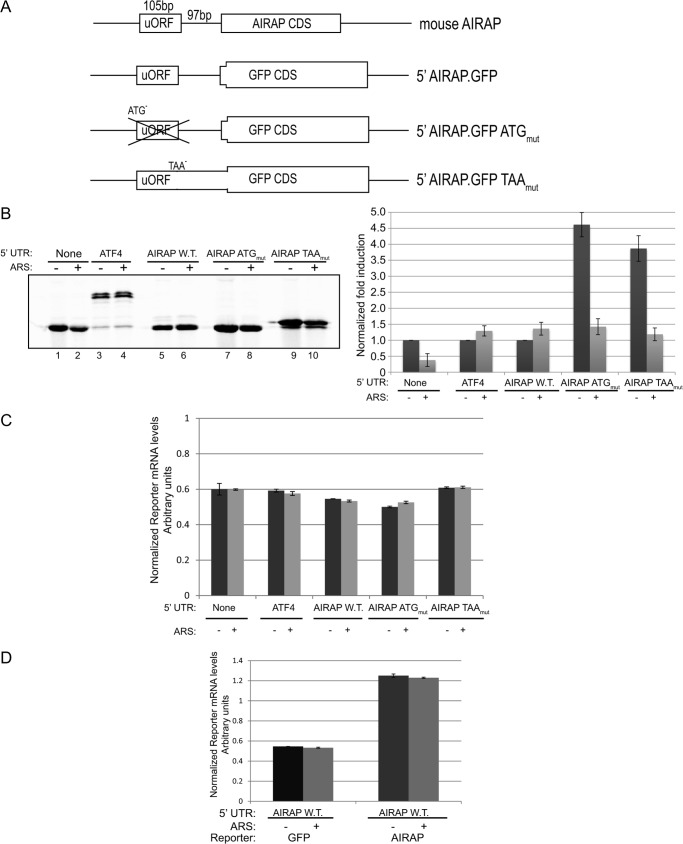FIGURE 2.
uORF mediates AIRAP translation induction. A, organization of the 5′-UTR of the mouse AIRAP transcript and the derivative 5′ AIRAP-GFP reporters. Exons 1 and 2 of the mouse AIRAP (encoding the 5′-UTR and the initiating amino acids of AIRAP CDS) were fused in-frame to the GFP CDS and are indicated in the GFP reporter. B, autoradiogram of radiolabeled proteins after a brief labeling pulse of untreated and pretreated cells. Cells were transfected with the indicated GFP reporter and subjected to a GFP IP, resolved by SDS-PAGE. Untreated wild-type reporter quantities were set as 1 for each reporter and relative quantities are shown. All quantifications were normalized to GFP mRNA transcript levels shown in panel B. Quantitation and statistical evaluations are presented from three independent experiments. Both ATF4 and AIRAP WT reporters showed a statistical significance of t test p < 0.001 upon comparing to the non-harboring 5′-UTR GFP reporter arsenite response. C, transcript levels from cells transfected with the indicated reporter and arsenite treated as indicated were quantified and normalized to a housekeeping gene using qPCR. Quantitation and statistical evaluations were obtained from three independent experiments with error bars representing the S.D. D, RT-PCR analysis of two reporters containing the 5'-UTR of AIRAP and the GFP CDS or AIRAP CDS. The GAPDH housekeeping gene was used as an internal loading control for total mRNA. Both reporters do not show any substantial changes and a role for mRNA stability in response to a brief arsenite treatment. The same conditions were used to measure translational induction; 60 min, 50 mm).

